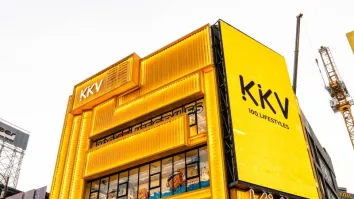Supply chain investments retailers should make in 2018
2017 has been marked by rapid advancements in the logistics industry as providers adapt to innovative technologies and processes to cater to consumer demands. Muneerah Bee gets Pang Mei Yee, vice-president, head of Innovation, Asia-Pacific, DHL Customer Solutions and Innovation, to share more insights.
Why is it important for retailers to invest in supply chain solutions for their businesses and how does it give them a competitive edge?
Pang Mei Yee: Investing in a supply chain management system allows retailers to give their customers what they want, when they want it, and invest as little as possible to get that done. While this may sound simple enough, achieving this involves a few vital requirements.
Having accurate visibility of one’s inventory is critical to being able to fulfil customers’ orders. This depends on many things, such as a retailer’s inventory management system — do you currently have enough inventories in your warehouse to fulfil customers’ orders? Customers also demand transparency from retail supply chains; if an item is not available at this store, they want to know if they can pick it up at another store close by. This requires better transparency and end-to-end visibility, making an omni-channel supply chain strategy important for retailers with multiple points of sale.
Apart from tracking goods stored in off-site locations such as a warehouse or another retail outlet, ensuring shelves and racks are adequately stocked with goods plays a significant part in optimising product availability and sales opportunities for bricks-and-mortar retailers.
How has the rise of e-commerce changed the way retailers should look at their supply chain and logistics strategies?
Pang: The rise of e-commerce has rapidly changed consumer behaviour. Consumers increasingly receive services through online channels and mobile applications. With less emphasis on bricks-and-mortar retailers, the modern shopper demands the convenience of shopping anytime, anywhere and on any device. To deliver this seamless transition across all channels requires retailers to adopt an omni-channel strategy, with last-mile delivery being the key differentiator across markets.
As an example, shopping cart abandonment is a metric that receives a lot of attention from e-commerce merchants, with nearly 70% of online shoppers abandoning their shopping carts Supply chain investments retailers should make in 2018 without completing their purchase. By offering flexibility in last-mile delivery to customers, online merchants are able to improve their cart conversion rates and avoid losing customers between shopping cart and payment.
Retailers who can offer such flexibility will likely find themselves with a significant competitive advantage. According to a report by DHL titled The 21st Century Spice Trade: A Guide to the Cross-Border E-Commerce Opportunity, businesses that offer express shipping options grow 60% faster than those who only offer standard deferred shipping. Beyond providing faster shipping options, other factors such as reliability of parcel delivery, guaranteed delivery times, and supporting “track and trace” capabilities were important considerations highlighted in the report’s findings. Having a clearly communicated goods returns policy can also help online retailers to earn shoppers’ trust, particularly for cross-border consumers buying from overseas sources.
While this may be a huge undertaking for online merchants, especially smaller businesses without dedicated resources to manage multiple delivery and return options across multiple markets, the solution lies in outsourcing the delivery process to a trusted logistics expert.
What are some of the supply chain trends and technologies that will grow in 2018?
Pang: In 2018, more organisations will look to harness mega-trends, such as the Internet of Things (IoT), advanced analytics and artificial intelligence, to digitalise logistics processes, enabling new ways of enhancing efficiency, customer interaction, and driving new business models. DHL has identified and assessed these areas with our Trend Research reports, providing data-driven insights in designing solutions to deliver greater value to our customers.
Based on findings from our flagship publication, DHL Logistics Trend Radar, some technologies and trends that will continue to gain traction are:
-
Anticipatory logistics: Increasing customer demand for shorter lead times from order to delivery will have an impact on supply chains, with strong implications driving demand for anticipatory logistics.Retailers are making their first experiments to anticipate demand. In an industrial context, predictive maintenance will continue to become a key area of focus — thanks to IoT, which is enabling new applications through connected assets and environments.Anticipatory shipping, for example, can be used by online retailers to predict customers’ orders before they occur, based on past purchasing behaviour. Using this information, retailers can plan the movement of goods to distribution centres that are near customers. This enables retailers to offer same-day or even one-hour deliveries. In future, prediction based shipping will run alongside the traditional order-based delivery — the challenge will be to integrate both methods in the network.Another aspect of anticipatory logistics is predictive maintenance. The data gathered from real-time monitoring of smart assets (such as machines and vehicles) can be analysed to predict maintenance needs, reducing downtime and costs for operations. These intelligent assets can also anticipate inventory for spare parts. For example, stock management and delivery of spare parts can be predicted ahead of time down to each unique component of a vehicle or machine.
Big data: Logistics is being transformed through the power of big data. Unprecedented amounts of data can now be captured from various sources along the supply chain, opening up new possibilities for boosting efficiency in areas such as capacity planning and vehicle route optimisation.Data analytics has enabled the development of customer-centric tools to improve supply chain visualisation, risk and resilience planning, and volume forecasting.Operational efficiency can be improved by using big data to optimise resource utilisation and operational efficiency. For example, in transportation, the intelligent correlation of data streams (such as shipment information and weather, as well as traffic) can enable real-time scheduling of assignments, optimisation of load sequences and ‘down-to-the-minute’ prediction of the estimated time of arrival.This enables end-to-end supply chain risk management based on predictive analytics increasing the resilience of global supply chains. Big data can be used to mitigate risk by detecting, evaluating, and alerting all potential disruptions on key trade lanes (such as growing port congestion or high flood risks).
-
DHL now also offers a supply chain risk management tool called Resilience 360, which allows customers to visualise their supply chain, receive near-real time alerts on supply chain relevant incidents and risk warnings.
-
Agile “batch size one” delivery: Another trend to look out for is ‘batch size one’, which follows the mega-trend of hyper-customisation. The batch size one trend anticipates that companies will establish micro-production sites closer to demand such as near or within megacities.Answering the need for product hyper-customisation and ever-faster delivery, highly automated ‘speed factories’ will utilise 3D printing technologies and cutting-edge robotics, automation and to rapidly produce individualised goods. Robotics and automation are key to meet the speed, volume and increased demand from booming e-commerce markets. The new collaborative robots, or co-bots, are designed to work and assist humans in daily operations. Safe, adaptable and cost efficient, such co-bots are being deployed across a range services such as picking and
co-packing to sorting and labelling. These robots can work safely around people, leaving workers to carry on with other more meaningful tasks. Early implementation in warehouses across the globe show promising signs of productivity gains across operations.Such technologies will enable retailers to be more agile, with increased efficiency in operation and more flexibility in last mile delivery. -
Bionic enhancements: Breakthroughs in sensors and nanotechnologies have enabled previously unimaginable bionic solutions. Wearable technologies and exoskeletons expand the boundaries of current physical barriers. Smart clothing, bionic arms and even smart glasses have the potential to support the logistics workforce in areas such as communication, process execution, and minimising health and safety risks in the supply chain.Smart wearables in the form of sensor trackers, digital heads-up displays, gesture controls and smart fabrics can support working routines and increase health and safety in all parts of the supply chain. In particular, smart glasses that digitalise task information into the user’s field of view (part of the augmented reality [AR] trend) and devices that integrate new forms of gesture control (such as control via muscle movements) are paving the way for the future of hands-free operations in logistics. For example, in a recent pilot with our customer Ricoh, smart glasses were deployed in our warehouses to improve picking efficiency. With picking instructions displayed clearly on their AR glasses, workers were better able to identify the right item to pick across near-identical products and shelves. In fact, pilot studies show improved picking efficiency up to 25%.



















 Advertise
Advertise





